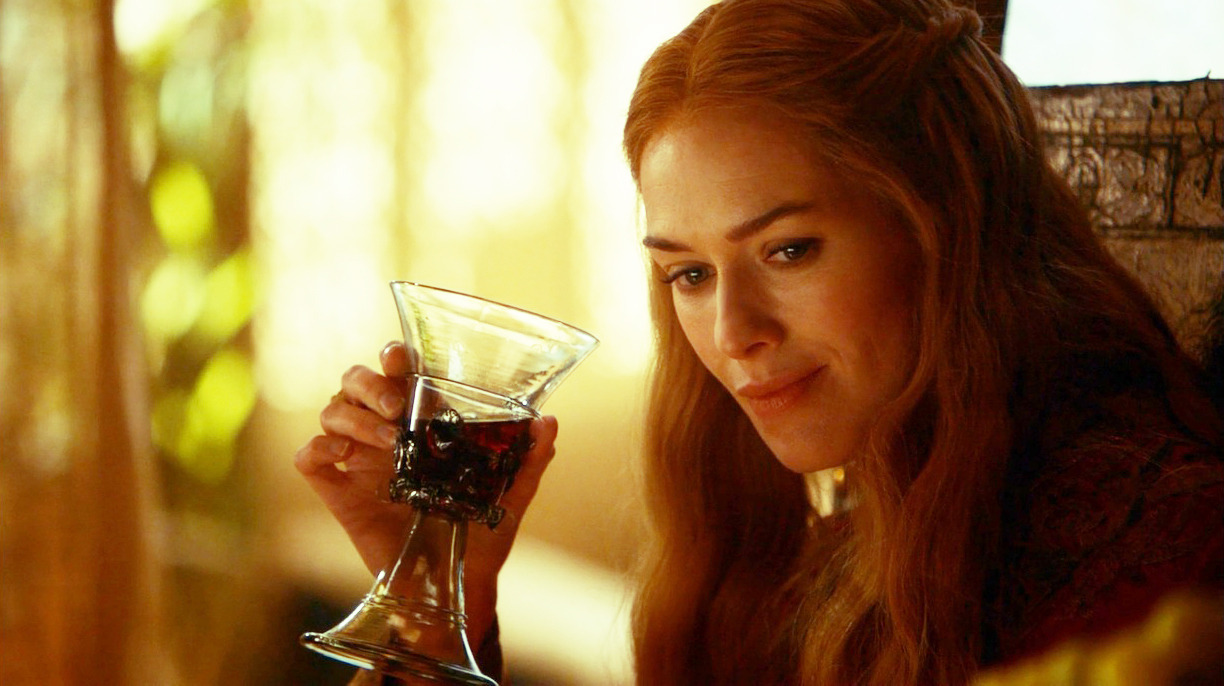Angelina Jolie as Grendel's Mother in Zemickis' film
This post is going to be like an episode of Scooby Doo, where Grendel's Mother is chasing you around, with her talons and her big ugly head, and then she takes off her monster costume and you realise it's all cool, you and Grendel's Mother aren't that different from each other, and she isn't actually a monster (speaking of which, that Scooby Doo team get a lot of
really similar cases).
As I pointed out previously (and if the blog title didn't give it away), I am a Grendel's Mother fan. Furthermore I believe that she isn't a monster, but a misunderstood character who has been wrongly translated into monstrosity.
Why did it happen that she has been turned into a scary, wolf-like, reptilian, troll-thing? Don't ask me, ask the translators who thought sacrificing accuracy for artistic effects or to make Beowulf more heroic or whatever other reasons, was a good idea. And unfortunately the trend has stuck, and everybody just imagines Grendel's Mother as the monster-thing without second thought.
(Disclaimer: These are my opinions. Feel free to continue thinking of Grendel's Mother as a monster....but just so you know, I secretly clench my fists at night at the thought of you)
So, basically, Grendel's Mother has been getting a hard time of it from the very beginning, starting off with translations such as John Mitchell Kemble's 1835 translation, right up to R.M. Liuzza's 2012 translation. While researching for my thesis two years ago, I did an extensive enough search in order to find just one translation that did not demonise Grendel's Mother...but nada. I realised that there was not much point in putting too much faith in any one translation, because, when it comes to ancient languages, it is pretty impossible to interpret them exactly - there will always be some leeway, and there is oftentimes no direct translations of words.
"Big Mother", a Marvel Universe character
Grendel's Mother is first introduced to us on line 1256, where she is named as Grendel's avenger and an
ides, aglæcwif (a word that would haunt me for months). This term has a pretty wide variety of translations. Alexander translates it as "monstrous ogress", Heaney as "monstrous hell-bride", "witch of the sea" (Osborn), Gummere as "monster of a woman", and there are many more similar interpretations from others. Now, the thing is, Beowulf is the only text that contains the word aglæcwif. In fancy terms, it's hapax legomenon, so it can't be compared against any other texts, which is a bit of a pain in the ass. BUT, the word can be divided into its roots, aglæca and wif. Interestingly enough,
aglæca, along with other compounds containing this word, is used several times throughout Beouwulf in reference to Grendel, the dragon, Sigemund (a hero of old) and Beowulf himself. When used in relation to Beowulf, it has been translated as "gallant man" (1512, Heaney), "warrior" (Gummere) and "fierce commander" (2592, Heaney). So...how do they get "monstrous ogress" and such terms out of a word that is otherwised used as "fighter, valliant warrior, dangerous opponent, one who struggles fiercely" (Sherman Kuhn)?? Does it not make more sense, and is it not a whole lot more accurate to translate it as "female-warrior" perhaps, seen as wif simply means "woman"? And although it is often used with negative connotations (eg in Juliana, when describing the devil), it has also been found in a description of Bede by Byrthferth of Ramsay, where he is called aglæca lareow, "awe-inspiring teacher" (Orchard).
It's not fair to say that the poet intended
aglæcwif to have negative connotations, and it is unreasonable to translate it as "warrior" or "hero" when it comes to Beowulf, but as "monstrous ogress" or "monster woman" (Chickering) when it comes to Grendel's Mother. I will also point out that ides comes before aglæcwif, a word "always used in reference to female humans, never animals, and usually
reserved for noble women” (Porter). As
ides aglæcwif is the first term used to describe Grendel's Mother, it of course influences how we view her for the rest of the poem. Unfortunately, we're not introduced to her as "female-warrior" or "warrior lady", and from the very outset we are encouraged to view her as a monster. Boo.
The cover of Seamus Heaney's Beowulf translation
I won't go into so much detail on the other terms, because we'll be here all day, and I'm suffering from a truly impressive hangover and I want to go lie out in the sun like a lizard (speaking of which, I wonder if this is what Grendel's Mother in Gunnarsson's Beowulf and Grendel must do). So I'll just lay out the necessary points.
- Atolan clommum, found on line 1502, has been translated as "terrile hooks" (Alexander) and "horrible claws" (Chickering), whereas it can also be translated as "terrible clasp", which does not necessarily imply any crazy physical deviations.
- Laþan fingrum, also, which is literally translated as "hateful fingers" has been translated as "savage talons" (Heaney) and "claws" by Chickering. These people are really out to get her!
- Brimwylf, lines 1506 and 1599, has been translated as "wolf of the waves" (Gummere) and "sea-wolf" by Kemble. Although these translations aren't incorrect, brimwylf does not necessarily mean that Grendel's Mother is a literal sea wolf, or even resembles one physically. It may simply function as an epithet, which isn't so far-fetched as wulf or wylf is often seen in other cases to denote warriors...the really obvious one being Beowulf himself! "Bee-wolf" or "wolf of the bees" does not mean that Beowulf is literally a stripy, flying, wolf! Another example is in The Battle of Maldon, where the invading Vikings are called wælwulfas (96), meaning "slaughter-wolves", and likewise, we know that the Vikings weren't actually wolves, so having wulf or wylf as a name, does not mean you are a physical wolf...or that you are to be perceived negatively. In fact, the whole reason the "wolf" compound was used in general, was most likely because of an "early admiration for the wolf" (“wulf”
def. I. Bosworth-Toller), and so far from being a derogatory term, it is most like that the poet was using this to emphasise her skills in battle.
- Our next word, grundwyrgenne (1518) has been translated as "monster of the deep" (Kemble), "swamp-thing from hell" (Heaney, you crazy dog), and "the abyss's curse (Morgan). It is also defined in the Clark-Hall dictionary as "water-wolf". Grund is obvious - ground, earth. But wyrgenne is where the problem lies. Wearg is
defined in the Bosworth-Toller
Anglo-Saxon Dictionary as “I. of human beings, a villain, felon, scoundrel,
criminal . . . II. of other
creatures, a monster, malignant being, evil spirit”. So...and I know many disagree....seeing as there isn't exactly any solid proof (just translations) that Grendel's Mother isn't human, the second definition just doesn't really seem solid enough. And although there may be some confusion with the Old Norse cognate vargr, meaning both "outlaw" and "wolf", it must be noted that other instances of wearg are not translated as "wolf"...so why Grendel's Mother? Exactly, it shouldn't be.
- Secg: On line 1378 this can be found, and has many colourful interpretations, like "sin-flecked being" (Gummere) and "most evil monster" (Crosley-Holland). Buuuut, secg is also used for the male characters in the poem, and guess what, it doesn't seem to mean "most evil monster" in those instances, but rather "warrior" or "prince" and even "hero"(Heaney). Sorry guys, ye gotta try harder.
- Wif unhyre (2120), literally “awful
woman” is translated as “ghastly dam” (Heaney).
- Handbanan (1330), “slayer-by-hand” is
translated by Alexander as “bloodthirsty monster”.
- Mere mihtig,
which appears directly after grundwyrgenne,
literally “mighty sea-woman” has been translated by Heaney as “the tarn hag”
and by Morgan as “the great sea-demon-woman” (whut??).
- Heo (1292), which quite
literally and simply means “she”, is translated as “hell-dam” by Heaney and
“monster” by Crossley-Holland.
If that isn't enough proof (of sorts, seen as we can't exactly ask the poet or any of his contemporaries) then I don't know what to do.
Of course, I haven't mentioned any of the descendants of Cain hooha, but some other time I will get around to that.
Works Cited and some references for those who are interested in reading further (I'm totally just covering my ass):
Alexander,
Michael, tran. Beowulf: a Verse Translation. London: Penguin, 1973.
Print.
Alfano,
C. “The Issue of Feminine Monstrosity: A Reevaluation of Grendel’s Mother.” Comitatus:
A Journal of Medieval and Renaissance Studies 23.1 (1992): 1-16. Print.
“The
Battle of Maldon.” The Labyrinth. Georgetown
University. 2007. Web. 9 Aug. 2012.
Bosworth-Toller Anglo-Saxon Dictionary.
2010. Web. 9 Apr. 2012.
Chickering,
Howell D., tran. Beowulf: A Dual-Language Edition. Bilingual. New York:
Anchor, 2006. Print.
Clark-Hall,
J. R. A Concise Anglo-Saxon Dictionary. Virginia: Wilder Publications,
2011. Print.
Crossley-Holland,
Kevin, tran. Beowulf. Oxford: Oxford UP, 1999. Print.
Cynewulf.
Juliana. Ed. Rosemary Woolf. Exeter:
U of Exeter P, 1993. Print.
Gummere,
Frances B., tran. Beowulf. Florida: Red and Black Publishers, 2007.
Print.
Heaney,
Seamus, tran. Beowulf: A New Translation. New ed. London: Faber and
Faber, 2002. Print.
Hennequin,
M. W. “We’ve Created a Monster: The Strange Case of Grendel’s Mother.” English
Studies 89.5 (2008): 503–523. Print.
Kemble,
John Mitchell, tran. Beowulf: A Translation of the Anglo-Saxon Poem of
Beowulf. London: William Pickering, 1837. Google Books. Web. 14 Jun. 2012.
Klaeber,
Frederick, trans. Robert D. Fulk, ed. Klaeber’s
Beowulf. Toronto: U of Toronto P, 2008. Print.
Morgan, Edwin, tran. Beowulf. Exeter: Carcanet, 2002.
Print
Orchard,
Andy. Pride and Prodigies: Studies in the Monsters of the Beowulf-Manuscript.
Toronto: U of Toronto P, 2003. Print.
Oswald,
Dana M., Monsters, Gender and Sexuality
in Medieval English Literature. Suffolk: Boydell and Brewer, 2010. Google Books. Web. 5 Jun. 2012.
Porter,
Dorothy Carr. “The Social Centrality of Women in Beowulf.” The Heroic Age.
2001. Web. 9 Apr. 2012.





































